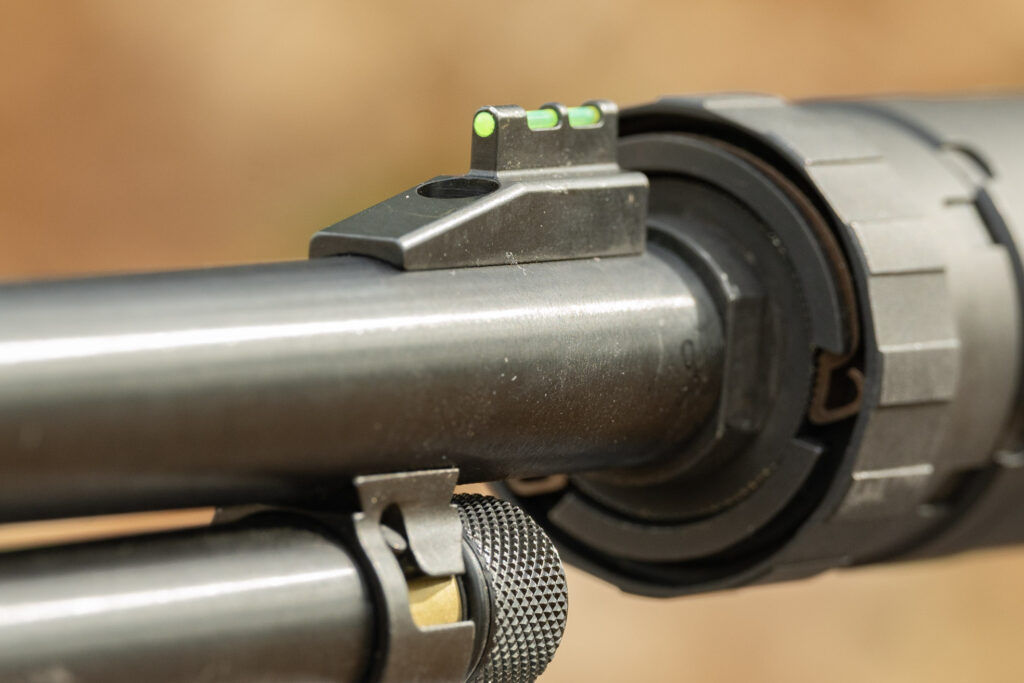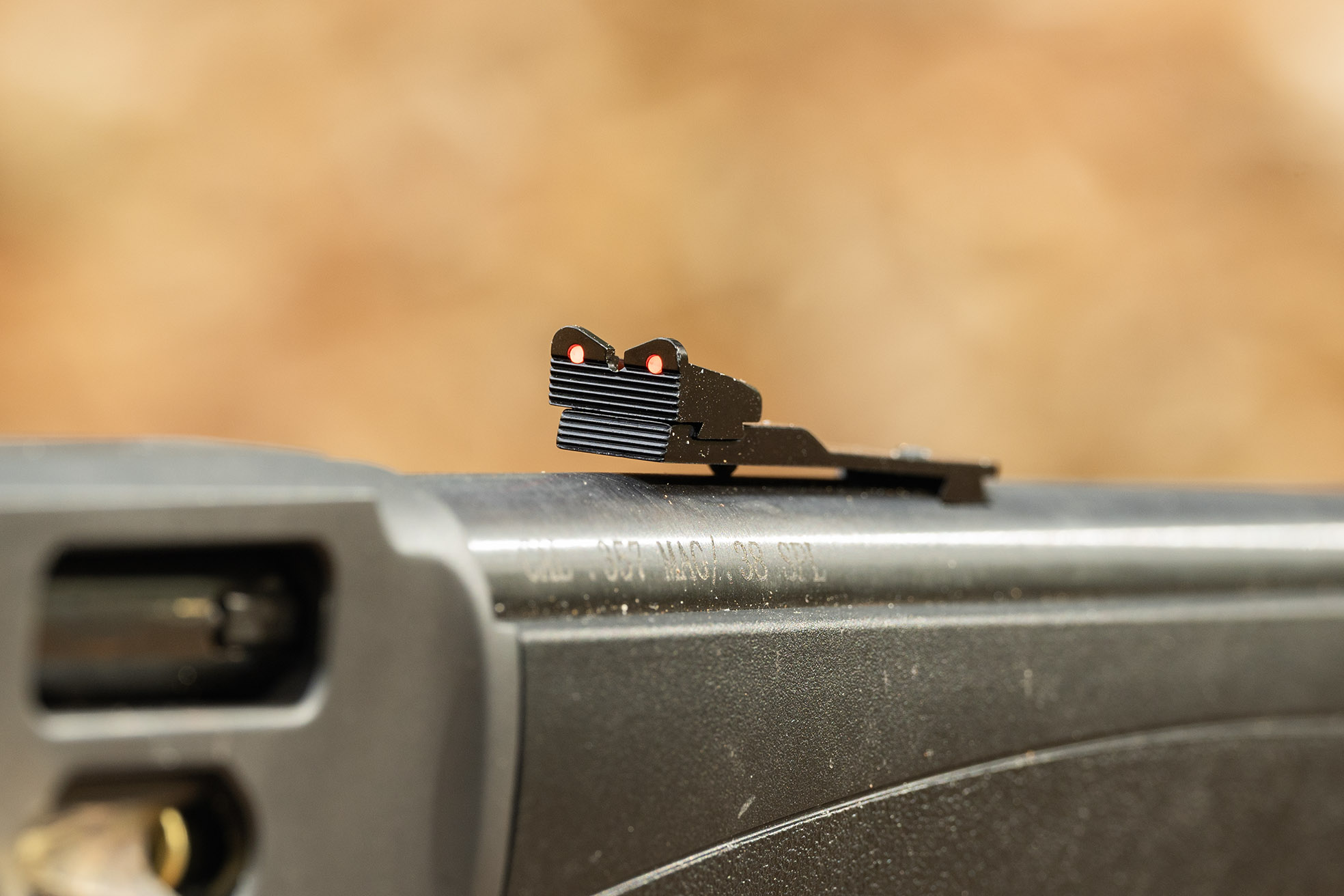An in-depth look at Henry’s lever-action X-Model Big Boy rifle in 357 magnum.
The Henry Big Boy X Model just might be the ultimate covert bugout gun. But with the proliferation of the AR-15 and the fact that the Henry is a manually operated firearm chambered in a pistol round, this seems counter-intuitive. What advantage could this ‘outdated’ firearm have over an AR?
More than you’d guess. So, let’s take a closer look at the Henry Model X in .357 Magnum and find out.
Henry Big Boy X Model Review – .357 Magnum
Video Review
I’m an enormous fan of lever-action rifles and not just because of Jurassic Park. There’s something uniquely American about them. They conjure up images of riding on open planes and gunfights at the OK Corral. More than that, the lever-action rifle was the “assault rifle” of its day – a real game-changer. It offered superior capacity and rate of fire to breech-loading guns like the Springfield Trapdoor. It also delivers better range and terminal ballistics than the ubiquitous Colt Single Action Army revolver. But with the advent of self-loading rifles and handguns, it’s easy for modern shooters to pass them up as novelties and outdated tools of a bygone era.
But those who think of lever-action firearms in that capacity are missing two of the most beneficial aspects of the design: reliability and ammunition commonality. Since these guns are manually operated, they aren’t ammunition sensitive – at least in terms of power – because the shooter themselves works the action between shots. The second benefit is one of the main reasons people buy 9mm pistol caliber carbines – they can share ammo between their sidearm and long gun. While this means that shooters will have to equip themselves with a revolver as a sidearm in the Henry’s case, it also means they have a lot more power at their hands than with something like a 9mm or .45 ACP pistol.
But before I get too far ahead of myself, let’s take a closer look at the features of the Henry Big Boy X Model, starting at the muzzle and working our way back to the buttstock to get a full understanding of all the included features of the gun.
X Model Features
Starting at the muzzle, the .357 Magnum X Model features a 17.4-inch barrel threaded to 5/8×24. The muzzle itself is capped with a knurled thread protector and, in testing, pairs phenomenally with a sound suppressor like my SilencerCo Hybrid 46M. One thing that was incredible about suppressing this gun was just how Hollywood quiet it was with 158gr 38 special loads. When shooting steel targets out to 75 yards, the impact on steel was dramatically louder than the actual shot. The only downsides of running .38spcl through the gun are dramatically decreased terminal ballistic efficacy and, in the case of the 158gr rounds, the rounds land several inches lower than point of aim past 100 yards. But this makes sense; the .38 spcl was never intended as a rifle cartridge. Lighter, faster loads like 125gr or 130gr FMJ can gain more than 50% extra muzzle velocity when compared to a common snub-nosed revolver. (Roughly 700fps vs 1240fps.) Still, if you’re looking for the quietest round to suppress, shooters will want to opt for the heavier 158gr rounds.
Sights
Now just behind the threaded muzzle, the Henry includes an excellent bright green fiber optic front sight post. The post is fixed to the barrel in such a way that it isn’t adjustable for windage or elevation, but since the rear sight is, this isn’t an issue. Below this is one of the more interesting aspects of the gun – the magazine tube.
Big Boy Tube Feeding
Traditionally, Henry rifles load from a removable magazine tube that runs parallel to the barrel. The tube consists of a fixed outer tube made of either aluminum or steel permanently attached to the barrel and a removable brass inner tube with contains the magazine spring and plunger (which acts as a follower). To load these guns, shooters had to remove the inner tube and then drop several rounds into the outer tube before replacing the inner tube. This is very fast but has some serious drawbacks.
Old Style Disadvantages
For starters, it’s extremely difficult to top off a magazine tube with this system since you have to remove it from the gun. Also, this can present a safety issue since a shooter has to place their hand in very close proximity to the muzzle of a loaded gun to both extract and install the inner mag tube. Lastly, if the gun is threaded and has a suppressor attached, there’s no way to actually remove it since the suppressor with block it.
New Side Loading Gate Solution
Henry’s solution on their side gate models is exactly what it sounds like – the addition of a side loading gate, and that’s exactly what they added to the X Model. But what I find very interesting is how the gun doesn’t do away with the original removable tube. So shooters with the Henry X Model who run it in stock configuration can still benefit from the quick-loading removable loading tube.
Speaking of which, just below this tube, the Henry includes a polymer forearm with a Picatinny rail on the bottom and a pair of M-Lok slots on both sides toward the endcap. Further back, the Henry X Model features a bright orange fiber optic rear sight notch dovetailed into the barrel, which is adjustable for windage and elevation.
Further back, the receiver is smooth but includes three threaded holes on top for installing either a Picatinny rail or scope rings. In testing, these mounting points held up great with the addition of a little non-permanent Loctite across several hundred rounds of ammo. Underneath the mounting point, the Henry X Model features the loading gate that their modern guns include, which is nicely beveled to ease reloading. However, in testing, I could not recommend wearing gloves. If your gloves are made of fabric or are at all loose-fitting, they will snag on the elevator every single time.
Just below the loading gate, the Henry uses a slightly oversized lever to make charging the gun easier if you do wear gloves. But I will recommend leather wrapping the loop if you intend to run the gun hard or fast. After a few dozen repetitions, the steel starts to feel pretty painful on the tops of your fingers.
X Model Stock
Finally, at the rear, the Henry Big Boy X Model includes a nice black synthetic stock topped with a very soft recoil pad that, in testing, was totally unnecessary. Whether you’re running full-power .357 Magnum rounds of light-kicking 38s, the gun does an incredible job of taming all felt recoil.
Big Boy Performance
For the review, I fired around 500 rounds of ammo through the Model X. The vast majority was MagTech 158gr .357 Magnum rounds.
In all this time, I only had a few malfunctions. All of them were with .38 special rounds and only on the last round in a magazine tube. For some reason, the last round would occasionally feed at the wrong angle. It would jam itself just below the feed ramp. Forcing the lever only made the rounds stick even worse. Interestingly, the malfunctions seemed to occur regardless of how hard a shooter worked the lever. We believe this means it wasn’t a shooter or ‘skill’ issue.
Accuracy
357 Magnum
In terms of accuracy, the Henry did not disappoint. Fired from a bench using a Lyman Bag Jack rest, the Henry shot between 2.4 and 2.6 MOA with 158gr .357 Magnum loads from MagTech, Winchester, and Black Hills. Black Hills was the most accurate. We even achieved a pair of five-round groups right around two MOA! Magtech was second and Winchester’s hunting rounds slightly larger groups.
Regardless of which of these rounds a shooter chooses, they’re all accurate enough to hit a deer’s vitals at 100 yards with plenty of energy to achieve an ethical kill.
38 Special
.38 special ammo was slightly less accurate at around three MOA at 100 yards – but this is still sufficient given the reduced effective range of the rifle when paired with these less potent rounds.
Speaking of potency, while I didn’t have a chance to test these rounds against ballistic gel, the difference in power when shooting steel plates with the rounds used from a handgun versus the Henry was unmistakable.
When firing .38 special rounds from even a full-sized revolver like the old Smith and Wesson Model 10, plates would lazily fall down unless a shooter hit the very top of the plate. Firing the same rounds from the X Model, the plates slammed down with authority at 25 and 50 yards. When I loaded up full-power .357 Magnum rounds, the plates would slam down with alarming force!
It really makes you appreciate just how much power you can squeeze from a .357 with an extra 11 inches of barrel.
Henry Big Boy X Model – Worth a Buy?
If a shooter already has a revolver (or possibly a Desert Eagle) chambered in .357 Magnum, the Model X is a no-brainer. It makes a fantastic companion to your favorite six-shooter. It allows you to simply pack a box or two of ammo for a make-shift bug out or camping loadout without having to mess with magazines or worrying about reliability issues. Plus, with the exception of large bears, .357 Magnum from a carbine can put down virtually any predator – two- or four-legged – in North America.
Additionally, if a shooter wants a quiet suppressor host capable of launching near-silent .38 special rounds or hard-hitting Magnum loads that is lightweight, soft-shooting, and easy to aim, the Henry Big Boy X Model is a great choice. Sure, there might be better, more tactical rifles available but there’s no denying the Henry is a great option — especially for shooters living in states that restrict ownership of self-loading firearms who don’t want a bolt-gun. Plus, all things considered, ammo for the Henry is pretty cost-effective, given the ballistic efficacy of the round.










